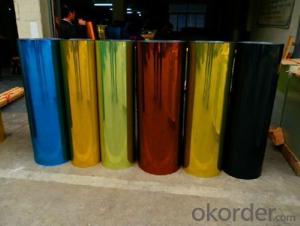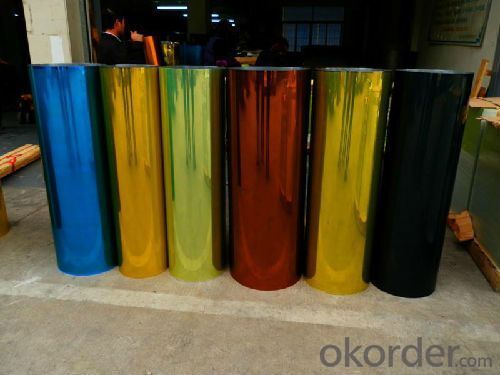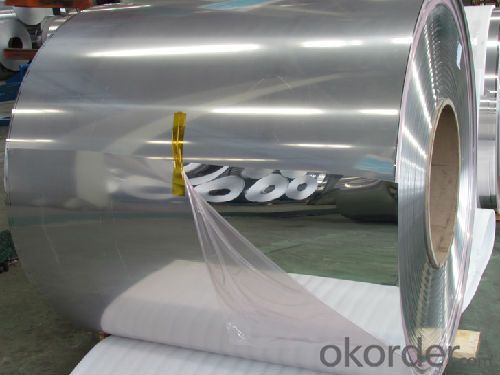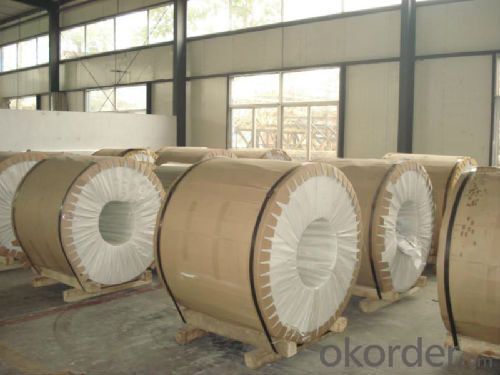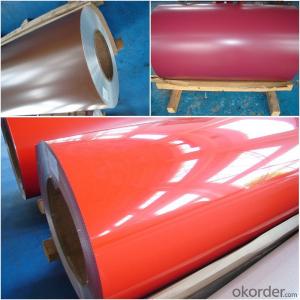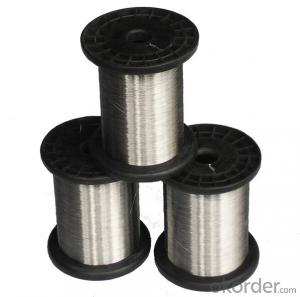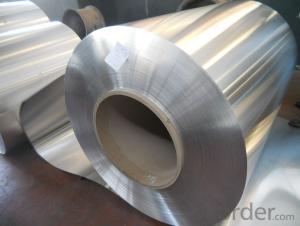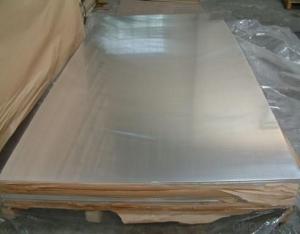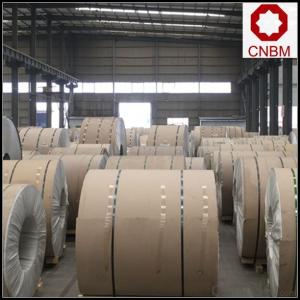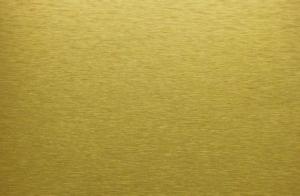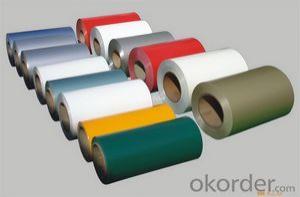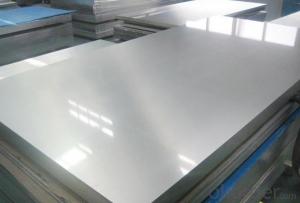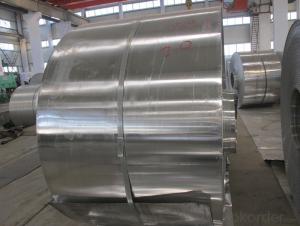Aluminum Colored Sheets - Aluminum Coil 0.2 0.3mm 3003 3004 3105 Cold Rolling Gutter
- Loading Port:
- Shanghai
- Payment Terms:
- TT OR LC
- Min Order Qty:
- 5 m.t.
- Supply Capability:
- 9000 m.t./month
OKorder Service Pledge
Quality Product, Order Online Tracking, Timely Delivery
OKorder Financial Service
Credit Rating, Credit Services, Credit Purchasing
You Might Also Like
Specification
Grade:
1000 Series,3000 Series,4000 Series,5000 Series,6000 Series,7000 Series,2000 Series
Surface Treatment:
Coated,Embossed,Anodized,Polished,Mill Finish,Color Coated,Oxidized,Enameled Wire,Brushed,Printed,Composited,Holographic Impression,Sand Blasted,Powder Coating
Shape:
Angle,Square,T-Profile,Round,Flat,Rectangular,Oval,Hexagonal
Temper:
T3-T8,O-H112,T351-T651,T351-T851,Soft,Half Hard,Hard
Application:
Liner & Wad,Decorations,Door & Window,Heat Sink,Transportation Tools,Glass Wall,Food,Kitchen Use,Pharmaceutical,Seal & Closure,Insulation Material,Label & Tag
Industrial 0.2 0.3mm 3003 3004 3105 cold rolling gutter aluminum coil
| Item | Industrial 0.2 0.3mm 3003 3004 3105 cold rolling gutter cost price aluminum coil |
| Standard | GB/T3190-2008, GB/T3880-2006, ASTM B209, JIS H4000-2006 .etc |
| Thickness | 0.1mm-10mm |
| Width | 1000-2000mm |
| Length | 1-12m, or as required |
| Temper | O-H112 |
| Surface | brush |
| MOQ | 1 Ton |
| Package | Standard export package, by wooden box or as required. |
| Application | 1) Construction material further processing |
| 2) Solar cell frame, solar battery frame | |
| 3) Glass curtain wall frame | |
| 4) Interior decoration | |
| 5) Elevator decoration | |
| 6) Signs, nameplate, bags making. | |
| 7) Automobile parts material | |
| 8) Office and Household appliances: HVAC equipments | |
| 9) The consumer electronics: mobile phones, digital cameras, MP3 .etc. | |
| Aluminum series | 3000 series |
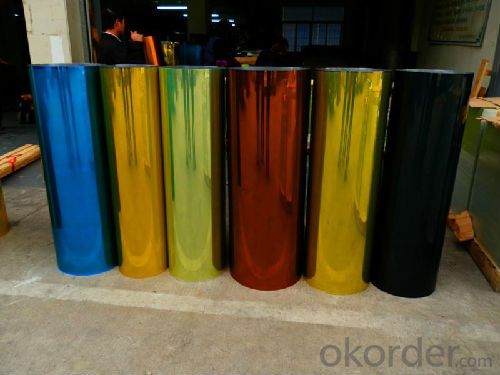
| Brand | Chemical component (Mass fraction (%) | Remarks | |||||||||||
| Si | Fe | Cu | Mn | Mg | Cr | Zn | Ti | Other | Al | (Old Brand) | |||
| Single | Total | ||||||||||||
| 3A21 | 0.6 | 0.7 | 0.2 | 1.0~1.6 | 0.05 | — | 0.1 | — | 0.15 | 0.05 | 0.1 | balance | LF21 |
| 3003 | 0.6 | 0.7 | 0.05~0.20 | 1.0~1.5 | — | — | 0.1 | — | — | 0.05 | 0.15 | balance | — |
| 3103 | 0.5 | 0.7 | 0.1 | 0.9~1.5 | 0.3 | 0.1 | 0.2 | Ti+Zr:0.10 | — | 0.05 | 0.15 | balance | — |
| 3004 | 0.3 | 0.7 | 0.25 | 1.0~1.5 | 0.8~1.3 | — | 0.25 | — | — | 0.05 | 0.15 | balance | — |
| 3005 | 0.6 | 0.7 | 0.3 | 1.0~1.5 | 0.20~0.6 | 0.1 | 0.25 | — | 0.1 | 0.05 | 0.15 | balance | — |
| 3105 | 0.6 | 0.7 | 0.3 | 0.30~0.8 | 0.20~0.8 | 0.2 | 0.4 | — | 0.1 | 0.05 | 0.15 | balance | — |
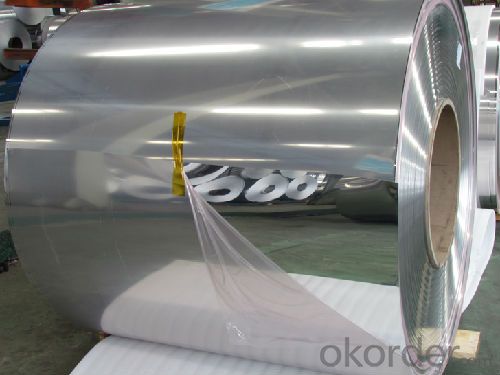
Packaging & Delivery
| Packaging Details: | Standard Seaworthy Package for Industrial 0.2 0.3mm 3003 3004 3105 cold rolling gutter cost price aluminum coil |
| Delivery Detail: | within 7 days for Industrial 0.2 0.3mm 3003 3004 3105 cold roll |
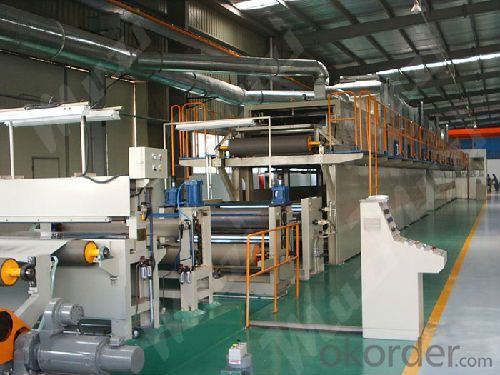
- Q: Are aluminum sheets suitable for electrical connectors?
- Indeed, electrical connectors can be effectively made using aluminum sheets. Aluminium, being a metal with high conductivity, is an ideal option for facilitating the flow of electric current. Its low electrical resistance enables the efficient transmission of electricity. Moreover, aluminum is renowned for its lightweight properties, resistance to corrosion, and affordability, rendering it a favored choice for electrical connectors across diverse sectors like automotive, aerospace, and electronics. Nevertheless, it should be emphasized that when aluminum connectors are utilized alongside dissimilar metals, extra precautions might be necessary to avert the occurrence of galvanic corrosion.
- Q: What is the main influence of the spacing?What are the main effects of spacing?
- Thermal explosion is related to a lot of factors. As to how much impact the lining board has on the thermal explosion, it's really impossible to speak of it. I think it has very little influence
- Q: Can aluminum sheet be used for insulation?
- Although aluminum sheet can be utilized for insulation purposes, it is not as efficient as alternative insulation materials like fiberglass or foam. This is due to its low thermal conductivity, which implies that it is not a proficient heat conductor. Nevertheless, aluminum lacks adequate insulating properties on its own since it does not offer substantial resistance to heat flow. To enhance its effectiveness for insulation, aluminum sheet is frequently combined with other insulating materials. For instance, aluminum foil is commonly employed as a radiant barrier in buildings to reflect heat and diminish the amount of heat transferred through walls and roofs. In summary, while aluminum sheet can contribute to insulation, it is typically employed in conjunction with other materials to provide superior thermal insulation.
- Q: What are the common sizes of aluminum sheet?
- Some common sizes of aluminum sheet include 4x8 feet (48x96 inches), 4x10 feet (48x120 inches), and 5x10 feet (60x120 inches).
- Q: What is the difference between aluminum plate and aluminum-plastic plate?
- The difference is as follows: 1, different layers: single aluminum plate is divided into two layers, the surface layer is aluminum skin, second layers of plastic, aluminum plate is divided into three layers: the surface layer and the third layer is an aluminum sheet, the middle is plastic, or aluminum plate than single aluminum plate a layer of aluminum skin; 2, the quality of different because: aluminum sheet aluminum plastic board less than a layer of aluminum skin, so the single aluminum plate than the aluminum plate quality will certainly be worse; 3, the price is different: single aluminum plate is cheaper than aluminum plate, aluminum plate positioning for low-grade, aluminum-plastic plate according to the quality and thickness of plastic and aluminum skin into the middle different grades, but certainly more than the single aluminum plate and expensive; 4, the construction effect is certainly not the same: a plastic plate can be slotted, bending turning construction construction, suitable for a variety of occasions, but not the single aluminum plate slot, bending, and because the bottom is plastic, such as plastic bonding effect Board.
- Q: Can aluminum sheets be used for sound insulation?
- Yes, aluminum sheets can be used for sound insulation to some extent. While aluminum is not the best material for soundproofing compared to others like rubber or foam, it can still provide some level of sound insulation when used correctly. Aluminum sheets can be installed as a barrier or partition in walls, ceilings, floors, or other surfaces to reduce the transmission of sound waves. However, it is important to note that additional soundproofing materials or techniques might be necessary to achieve optimal results.
- Q: What are the potential health hazards related to working with aluminum sheets?
- <p>Working with aluminum sheets generally has low health risks. However, inhalation of aluminum dust can cause respiratory issues, such as coughing and shortness of breath. Prolonged exposure may lead to a condition known as metal fume fever. Additionally, aluminum can cause skin irritation in some individuals. It's important to use proper ventilation and personal protective equipment, such as masks and gloves, to minimize these risks.</p>
- Q: How do you prevent discoloration of aluminum sheets?
- To prevent discoloration of aluminum sheets, it is important to apply a protective coating or finish to the surface. This can include using clear lacquer or anodizing the aluminum, which creates a durable oxide layer that resists corrosion and discoloration. Regular cleaning and maintenance, avoiding harsh chemicals, and protecting the aluminum from exposure to extreme temperatures can also help prevent discoloration.
- Q: Are aluminum sheets suitable for decorative screens?
- Yes, aluminum sheets are suitable for decorative screens. They are lightweight, durable, and can be easily customized into various shapes and designs. Additionally, aluminum's corrosion resistance makes it suitable for both indoor and outdoor applications, making it a popular choice for decorative screens.
- Q: Are aluminum sheets suitable for marine vessel construction?
- Yes, aluminum sheets are suitable for marine vessel construction. Aluminum is lightweight, strong, and resistant to corrosion, making it an ideal material for building boats and ships. It also offers good thermal conductivity and is easily weldable, making it a popular choice in the marine industry.
Send your message to us
Aluminum Colored Sheets - Aluminum Coil 0.2 0.3mm 3003 3004 3105 Cold Rolling Gutter
- Loading Port:
- Shanghai
- Payment Terms:
- TT OR LC
- Min Order Qty:
- 5 m.t.
- Supply Capability:
- 9000 m.t./month
OKorder Service Pledge
Quality Product, Order Online Tracking, Timely Delivery
OKorder Financial Service
Credit Rating, Credit Services, Credit Purchasing
Similar products
Hot products
Hot Searches
Related keywords
